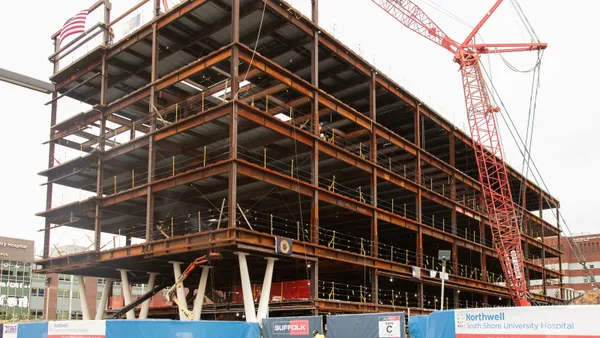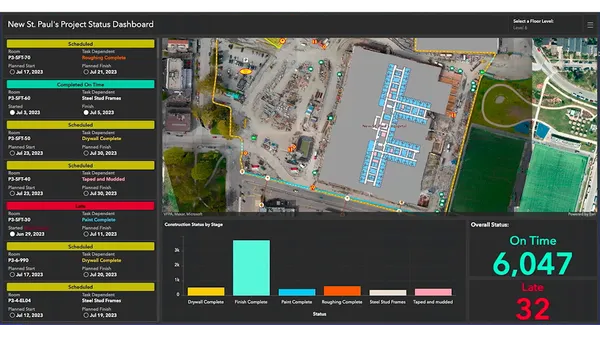After more than 10 years working with BIM technology for various construction firms, Blake Rawlings knows firsthand how much it can help win more work. In one of the most memorable examples, Rawlings was working on a new plant for “one of the largest semiconductor manufacturers in the world.” When the client saw how workers used BIM to speed up workflow and increase efficiency, the company awarded his firm two additional plants.
“It’s just one more thing that gives owners a level of confidence that we know what we’re doing and we’re able to execute it,” said Rawlings, who’s now integrated construction team manager with Okland Construction.
In fact, in today’s increasingly competitive environment, it’s more difficult than ever for contractors to win those kinds of complex contracts. One of the big hurdles is clients’ shift to new contract models, such as lump-sum turnkey (LSTK), public-private partnerships (PPPs) and integrated project delivery (IPD). That’s why more and more savvy contractors such as Okland Construction are using BIM technology to win these ever more complex contracts — and maintain their profit margins.
Why owners love BIM
Studies show that owners clearly recognize BIM’s value. In fact, more than 93% of owners who use BIM on projects find that it improves the quality/function of the final design, according to a Dodge Data & Analytics report titled, “Measuring the Impact of BIM on Complex Buildings.” That study further found owners praising BIM for the following:
- 73% said it increased their understanding of proposed design solutions.
- 70% said it generated better construction documents.
- 70% said it improved the ability to plan construction phasing and logistics.
- 87% said it increased overall labor productivity.
Experts say it’s no surprise owners have such high praise for BIM technology. One of the biggest selling points is BIM’s ability to produce 3-D visualizations and fly-throughs that show clients true and exciting representations of projects rather than relying on yesterday’s staid, 2-D plans. What’s more, because BIM allows contractors to virtually construct projects, kinks and roadblocks are worked through before construction starts. BIM technology also produces better collaboration, efficiency and, ultimately, value.
“Using digital construction technology such as BIM improves the quality of the overall project, while reducing the risk of delays and late handovers,” said Michael Moran, director at Telos, a digital construction consultancy. “All of those are practical outcomes that improve project delivery.”
BIM increasingly mandated
And increasingly, more clients aren’t just wanting BIM to be part of their project — they’re demanding it. That’s especially true on large, complex private projects such as hospitals, airports and university campuses. At the same time, countries such as the United Kingdom now mandate that BIM be used on public works projects, and ISO 19650 lays out a number of ways projects teams are expected to work using BIM, Moran said.
“You’re starting to see more and more mandates for actually using BIM,” he said. “Contractors not working with BIM will be disqualified from even bidding on certain projects.”
Aside from the code mandates, Rawlings said demonstrating BIM skills and expertise to prospective clients is becoming a ticket to play. “If you're not utilizing the technology, then you're not going to be in the game. If we had a subcontractor say, ‘Hey, you need to send me a fax,’ we'd be like, ‘Well, we'll just go with somebody else.’” Rawlings explained. “I really feel that if you’re not adopting digital technology, then you're going to be left behind.”
Owners expecting BIM
Rawlings has seen that pattern play out more and more frequently as owners expect different relationships with contractors. He said that 10 or 15 years ago, contractors simply won a bid and then turned the project over to the owner when it was completed. Now, he said, owners are typically in weekly meetings with construction companies throughout the building process to stay updated on timelines and budgets. Once again, BIM technologies are a key part of these meetings.
Using BIM, Rawlings can show owners the progress workers are making and answer questions they may have about specs and warranties right there on the 3-D model. Even better, he can show how his team’s efficiency and cooperation are creating the end product of their dreams through each stage of construction.
“Clients are expecting BIM. They’re expecting to see the coordination and the 3-D modeling. They’re expecting to see a collaboration,” Rawlings said. “With BIM technology, we’re able to have access to a lot more information and the owners are now a lot more involved in the actual construction process.”










